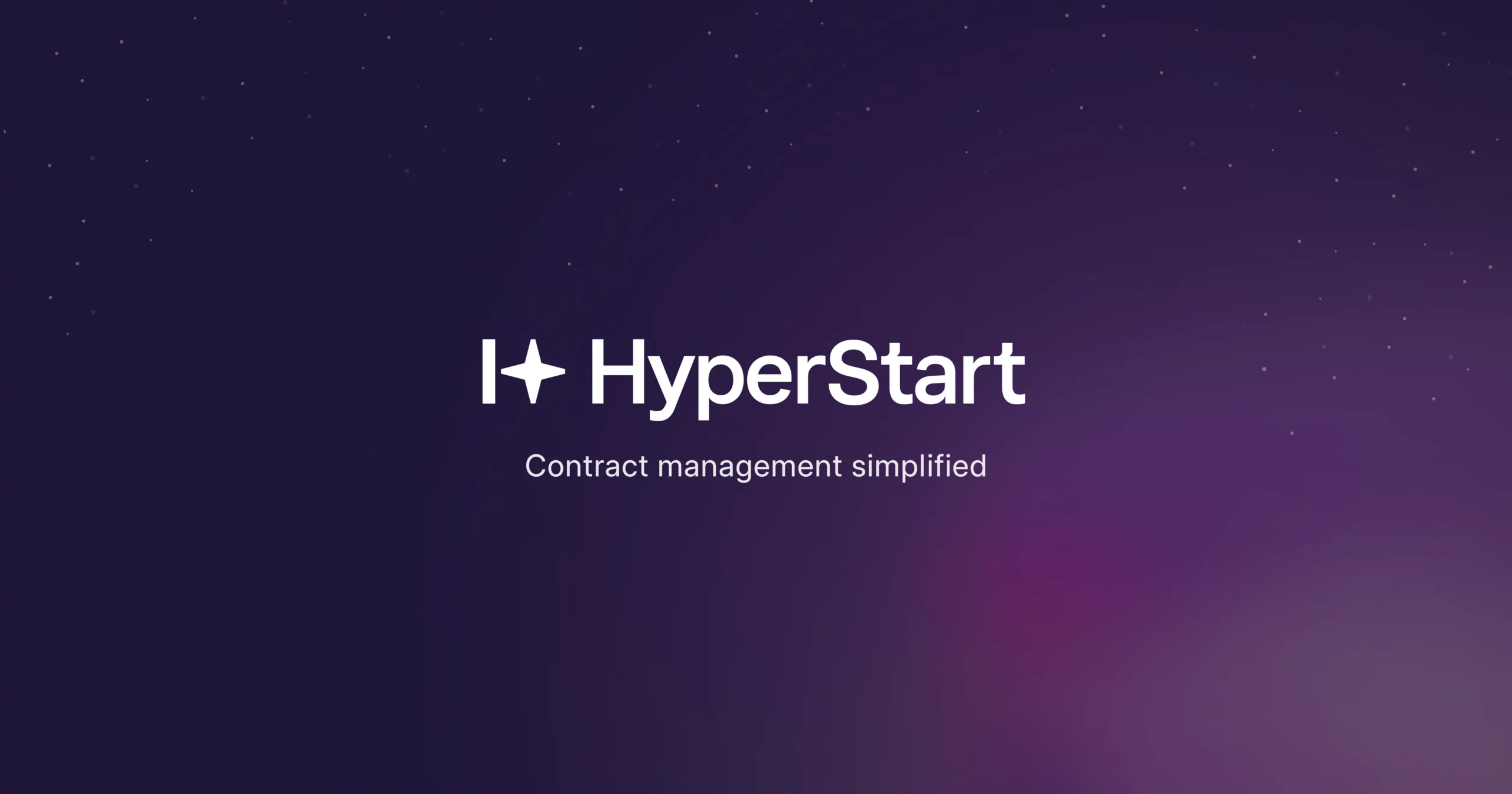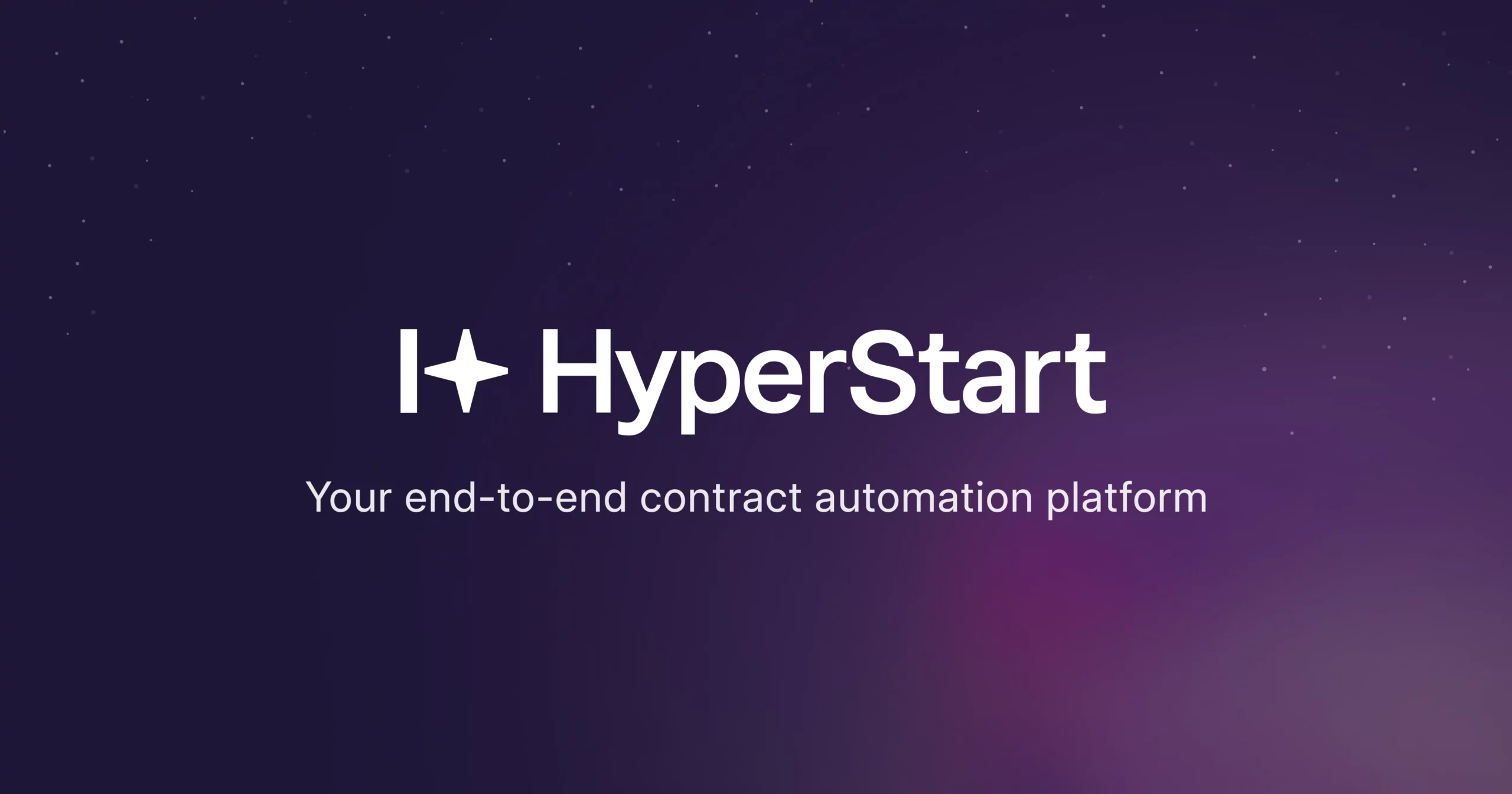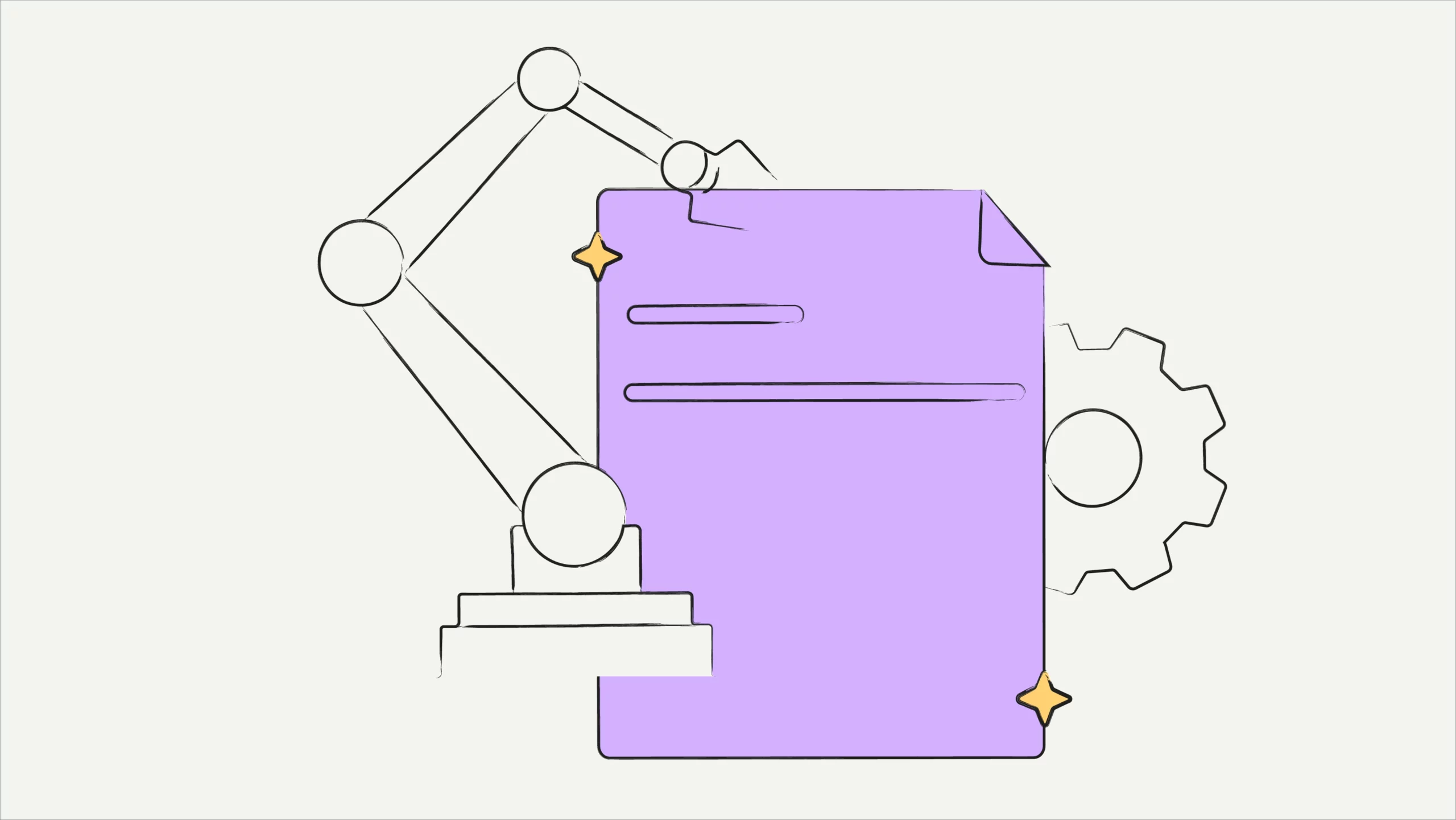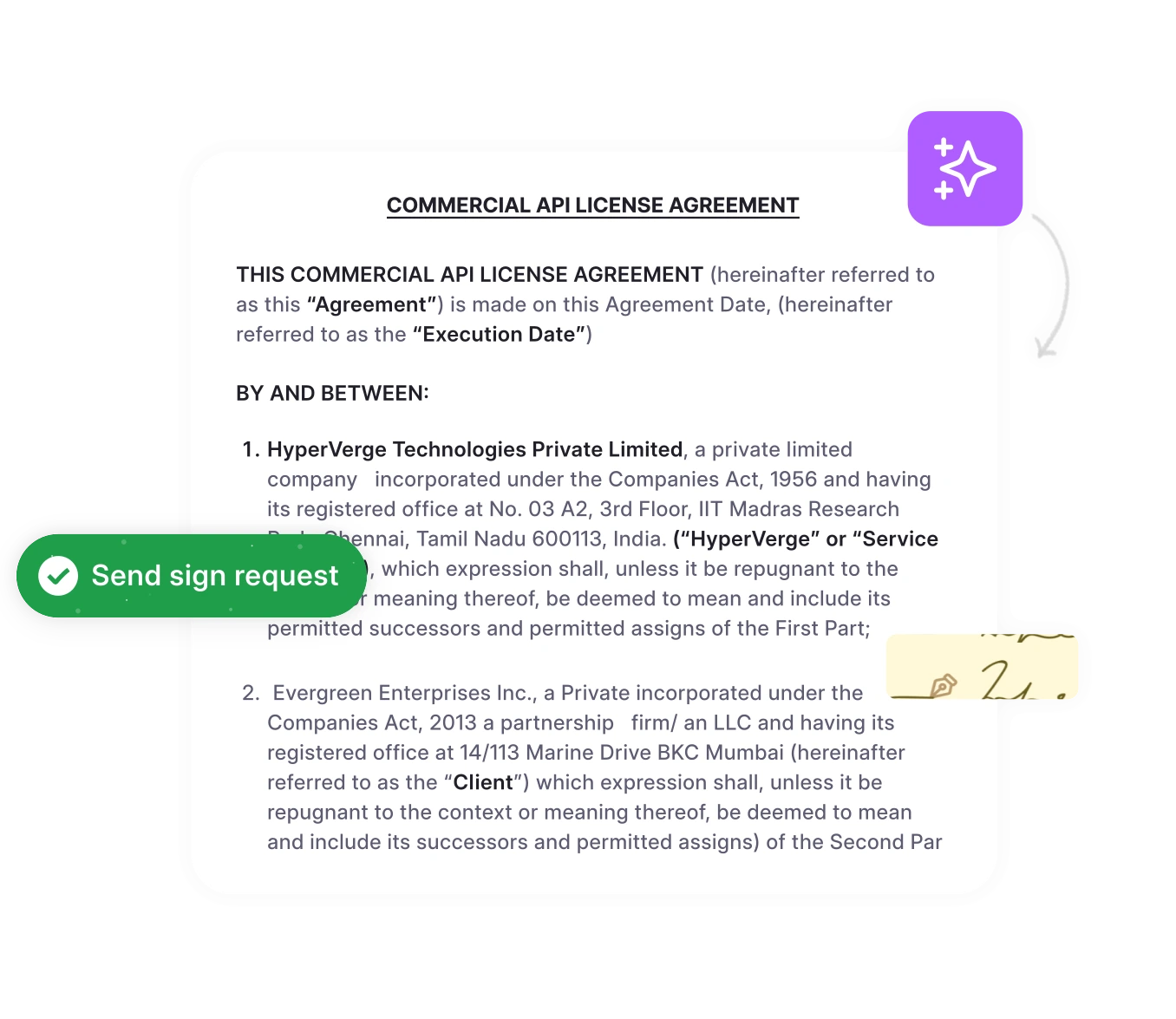Legal teams managing vendor relationships know the frustration: dozens of DPA agreement renewals scattered across email threads, compliance deadlines missed, and GDPR audit preparation that consumes entire weekends. With data protection agreement requirements tightening globally, DPA management has become a critical operational challenge that demands both legal precision and systematic efficiency.
This comprehensive guide covers everything legal professionals need to know about data processing agreements, from GDPR compliance requirements to automated contract management solutions that transform DPA chaos into organized operations.
What is a data processing agreement?
A data processing agreement (DPA) is a legally binding contract between a data controller and a data processor that defines how personal data will be handled to ensure compliance with data protection laws, such as the GDPR. The DPA definition establishes clear responsibilities, security requirements, and processing limitations to protect individual rights to privacy.
Under GDPR Article 28, any organization that engages a third-party processor to handle personal data must have a written DPA in place. This makes data processing agreements a fundamental compliance requirement, not an optional safeguard.
| Agreement Type | Primary Purpose | Key Focus | Legal Requirement |
| Data Processing Agreement | Define processor responsibilities for personal data handling | GDPR Article 28 compliance, security measures | Mandatory for EU personal data processing |
| Privacy Policy | Inform data subjects about data collection practices | Transparency, data subject rights | Required for data controllers |
| Data Sharing Agreement | Govern data exchange between controllers | Joint processing responsibilities | Required for controller-to-controller transfers |
The controller-processor relationship is central to understanding the meaning of DPA: controllers determine the purposes and means of processing personal data, while processors act on the controller’s behalf according to the documented instructions outlined in the DPA contract.
Eliminate manual tracking
Automate contracts from creation to compliance monitoring across all agreement types.
Book a DemoWhat are the different types of data processing agreements?
Data processing agreements vary depending on the nature of the processing relationship and the specific business context. Understanding these DPA agreement types helps legal teams select appropriate templates and negotiate relevant terms.
| DPA Type | Use Case | Key Characteristics | Common Examples |
| Cloud Service DPA | SaaS platforms and cloud storage | Standardized terms, limited negotiation | AWS, Google Cloud, Microsoft Azure |
| Vendor Service DPA | Professional services with data access | Customizable terms, project-specific | Marketing agencies, consultants, outsourced support |
| Subprocessor DPA | Third-party processors engaged by the main processor | Chain of processing responsibilities | Payment processors, analytics tools |
| Cross-border DPA | International data transfers | Additional transfer mechanism requirements | Standard Contractual Clauses, adequacy decisions |
Each DPA type requires specific considerations for legal teams. Let’s examine the key characteristics and management requirements for each category.
1. Cloud service data processing agreements
Cloud service providers typically offer standardized data processing addendum terms as part of their service agreements. These DPAs cover common processing scenarios but may require additional security measures for sensitive data types. Legal teams should review cloud DPAs for adequate technical safeguards and breach notification procedures.
2. Vendor and supplier data processing agreements
Vendor contract management often involves custom DPA negotiations where processing activities vary by project. These agreements require detailed scoping of data types, processing purposes, and retention periods. Unlike standardized cloud DPAs, vendor processing agreements allow for more tailored security and compliance requirements.
3. Subprocessor data processing agreements
When processors engage their own subprocessors, additional DPA layers are created. The original processor remains liable to the controller while ensuring subprocessors meet equivalent data protection standards. This makes complex compliance chains that require systematic tracking and monitoring.
When do you need a data processing agreement?
You need a data processing agreement whenever your organization engages external processors to handle the personal data of EU residents, as required by GDPR Article 28. This legal requirement applies to most modern business relationships involving data sharing.
1. When GDPR Article 28 makes DPAs mandatory
DPA GDPR compliance is mandatory under Article 28 for any processing arrangement involving EU personal data.
The regulation requires written contracts with specific mandatory clauses covering processing instructions, security measures, and data subject rights assistance. Here, contract compliance extends beyond initial DPA execution to ongoing monitoring and management of renewals.
2. When cross-border transfers require additional DPA safeguards
Cross-border data transfers require additional safeguards beyond standard DPA terms. Organizations must implement appropriate transfer mechanisms, such as Standard Contractual Clauses (SCCs) or rely on adequacy decisions. Data privacy agreement terms must address local law conflicts and government access requests.
3. When multiple processors need separate DPA agreements
Managing multiple processor relationships creates complex compliance challenges. Third-party contract management becomes essential when each processing relationship requires its own DPA, creating compliance obligations that multiply with business growth and vendor expansion.
4. When using cloud services or SaaS platforms
You need a DPA when using cloud services or SaaS platforms, such as CRM systems, HR platforms, or analytics tools. Before sharing any personal data, you should confirm that the provider has a GDPR-compliant DPA in place and review its terms regularly for updates or changes.
5. When engaging professional service providers
Engaging professional service providers, such as marketing agencies, IT support, or consultants who access personal data, also requires a DPA. The agreement should include all mandatory GDPR clauses, and organizations should monitor the provider’s compliance throughout the engagement.
6. When there are joint processing arrangements
In joint processing arrangements, where two or more controllers jointly process data, a joint DPA should clearly define the roles and responsibilities. Each party must ensure compliance with GDPR requirements, and agreements should be reviewed and updated as processing arrangements evolve.
The compliance stakes are significant. According to the CMS Law GDPR Enforcement Tracker, insufficient data processing agreements have resulted in €1,128,510 in fines across 14 enforcement actions. Meanwhile, broader non-compliance with general data protection principles has led to over €2.5 billion in penalties across 717 cases since the GDPR enforcement began.
What are the essential elements of a data processing agreement?
GDPR Article 28(3) mandates specific DPA requirements that must be included in every data processing agreement. These essential elements create the compliance framework for processor responsibilities and controller oversight.
| DPA Element | GDPR Requirement | Legal Purpose | Implementation Details |
| Processing Instructions | Art. 28(3)(a) | Limit processor activities to authorized purposes | Detailed scope, data types, and processing activities |
| Confidentiality Obligations | Art. 28(3)(b) | Ensure that the processor staff maintain data confidentiality | Staff training, access controls, and confidentiality agreements |
| Security Measures | Art. 28(3)(c) | Implement appropriate technical/organizational safeguards | Encryption, access logging, security assessments |
| Subprocessor Management | Art. 28(3)(d) | Control engagement of additional processors | Prior authorization, equivalent protection standards |
| Data Subject Rights | Art. 28(3)(e) | Assist the controller in responding to individual requests | Access, rectification, erasure, and portability procedures |
| Breach Notification | Art. 28(3)(f) | Notify the controller of personal data breaches | Incident response, notification timelines, and forensic cooperation |
| End-of-Contract | Art. 28(3)(g) | Delete or return personal data upon termination | Data destruction certificates, return procedures |
| Audit Rights | Art. 28(3)(h) | Allow controller compliance monitoring | On-site inspections, documentation reviews, certification |
These eight elements form the foundation of GDPR-compliant data processing agreements. Let’s examine how to implement each requirement effectively.
How to implement GDPR-compliant DPA agreement requirements
Defining what data can be processed and why
DPA compliance requires a precise definition of processing activities, data categories, and data subject types. Vague processing descriptions create compliance gaps and increase regulatory risk. Specific contract clauses should define exactly what personal data will be processed and for which authorized purposes, ensuring both legal compliance and operational clarity.
Required security controls and technical safeguards
Technical and organizational security measures must be “appropriate” considering processing risks, data sensitivity, and state of technology. This includes encryption, access controls, staff training, and regular security assessments. Data processing agreement template terms should specify minimum security standards rather than generic “industry standard” language.
Data breach response and notification requirements
Data breach notification obligations require processors to notify controllers “without undue delay” after becoming aware of incidents. DPAs should specify notification timelines, required information, and ongoing cooperation duties for breach investigation and regulatory reporting.
When and how personal data must be deleted
If you find yourself asking, ‘When is a data processing agreement required to address data retention?’, the answer is – always. DPAs must specify retention periods aligned with processing purposes and legal requirements. End-of-contract provisions should mandate the secure deletion of data or its return within specified timeframes, accompanied by destruction certificates where appropriate.
The controller needs to be very clear from the outset about the extent of the processing it is contracting out. Article 28(3) sets out specific terms or clauses that must be included in the contract: processing only on the documented instructions of the controller, duty of confidence, appropriate security measures, using sub-processors, data subjects’ rights, assisting the controller, end-of-contract provisions, and audits and inspections.
Read
How to create a DPA agreement step-by-step
Creating effective data processing agreements requires a systematic assessment of processing activities, careful template selection, and strategic negotiation of processor responsibilities.
Step 1: Identify your data processing activities
Begin by conducting a comprehensive data processing inventory to understand what personal data your organization controls and which third parties process it. Document data types, processing purposes, data flows, and retention requirements for each processor relationship.
Key assessment areas:
- Personal data categories being processed
- Processing purposes and legal basis
- Data subject types and geographic scope
- Current security measures and controls
- Existing processor relationships and contracts
Step 2: Select an appropriate DPA template
Choose appropriate DPA template terms based on processing risk levels and regulatory requirements. High-risk processing activities require more detailed security specifications and compliance obligations. Understanding different types of contracts helps legal teams navigate template selection and customization requirements.
Template selection factors:
- Processing risk assessment results
- Industry-specific compliance requirements
- Processor negotiation flexibility
- International transfer requirements
- Subprocessor authorization models
Step 3: Negotiate terms with processors
Focus negotiations on security measures, liability allocation, and compliance monitoring rights. Many processors offer standard DPA terms with limited modification options, requiring careful evaluation of acceptable risk levels. Practical strategies for negotiating contracts with vendors often involve striking a balance between compliance requirements and business operational needs.
Priority negotiation areas:
- Security incident notification timelines
- Audit rights and inspection procedures
- Subprocessor authorization requirements
- Data retention and deletion obligations
- Liability caps and indemnification terms
Step 4: Execute and implement the agreement
DPA legal execution requires proper signing authority and integration with broader vendor management processes. Ensure processor staff understand their DPA obligations through training and procedural documentation.
Step 5: Monitor ongoing compliance
Obligation management extends beyond DPA signature to ongoing compliance monitoring, renewal tracking, and periodic compliance assessments. This includes monitoring processor security measures, scheduling audits, and notifying of subprocessor changes.
What are the biggest challenges with DPA agreement management?
Legal teams face mounting pressure to manage complex DPA portfolios while addressing resource constraints and compliance risks.
Challenge 1: Tracking multiple vendor DPAs across systems
Organizations typically manage dozens of processor relationships with DPAs, which are often scattered across email attachments, shared drives, and contract management systems. This fragmentation makes it nearly impossible to maintain current oversight of processor obligations, renewal deadlines, and compliance status.
Solution: AI-powered contract repository centralizes all DPAs with automated tracking and real-time status updates. Contract tracking becomes systematic rather than reactive, with intelligent alerts for renewal deadlines and compliance reviews.
Challenge 2: Compliance monitoring at scale
IBM’s 2025 Cost of a Data Breach Report reveals that the global average cost of a data breach reached $4.44 million. Organizations lacking proper data processing controls face significantly higher costs—a 43% cost difference between those with high security skills shortages and those with adequate security measures. Manual compliance monitoring cannot keep pace with expanding processor networks.
Solution: Intelligent obligation tracking prevents compliance gaps with automated alerts for audit requirements, security assessments, and breach notification testing. Contract monitoring transforms from periodic manual reviews to continuous compliance oversight.
Challenge 3: Managing renewal deadlines and amendments
DPA contract renewals often coincide with broader vendor contract negotiations, creating complex coordination requirements. Contract renewal management becomes critical as expired DPAs create immediate compliance violations.
Solution: Never miss another DPA renewal with automated 90-day alerts and streamlined amendment workflows. Contract amendment tracking ensures continuity of compliance through changes in vendor relationships and modifications to services.
The cyber skills gap has increased by 8% since 2024, with two out of three organizations reporting moderate to critical skills gaps. Only 14% of organizations are confident they have the people and skills needed to meet current cybersecurity requirements, while 49% of public-sector organizations indicate they lack the necessary talent to meet their cybersecurity goals.
Read
Automate data processing agreement management with HyperStart
Legal teams shouldn’t spend a significant amount of their time on administrative tracking when strategic data protection counsel is required. HyperStart – AI-powered contract lifecycle management platform transforms what was previously a manual spreadsheet-based data processing agreement management into intelligent automation.
Our customers achieve 80% faster compliance monitoring, ensuring they never miss critical DPA renewal deadlines. LeadSquared’s legal team evaluated 22 different parameters when selecting HyperStart to meet their SOC 2 compliance requirements, specifically choosing our platform for its comprehensive contract compliance capabilities.
Key transformation benefits:
- Centralized DPA repository with AI-powered search and classification through contract repository
- Automated renewal alerts prevent compliance lapses
- Intelligent obligation tracking monitors processor responsibilities
- Real-time compliance dashboards for executive reporting










